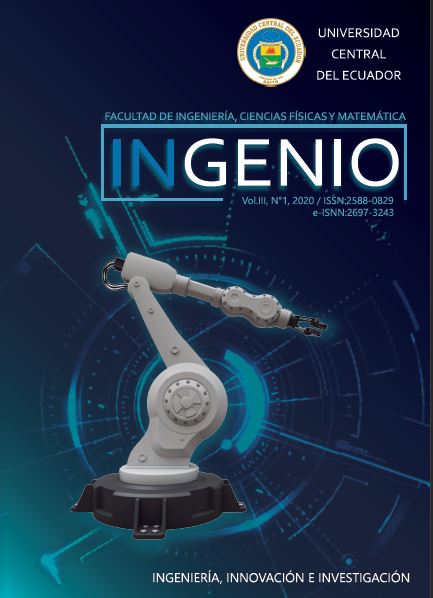Manufacturing Technologies and their Influence on Industrial Design
Main Article Content
Abstract
Patrik Schumacher's Theory of Autopoiesis, developed for Architectural Design can be embodied through the interdisciplinary application of design and various Engineering disciplines: Civil, Structural, Mechanical and Manufacturing. In this essay the objective of extrapolation of this theory is to turn it into the theoretical and conceptual basis that supports the design of products to be manufactured in series at the industrial level. In this way, it is intended to disseminate a parametric product design methodology in Ecuador.
As an element that guides the conceptual design of the product taken as a case study, the three-dimensional infinity symbol has been chosen due to its universal validity for different cultures around the world. Thus, new models of surfaces for structures are proposed, based on canonical surfaces based, for example, on the circle or on the ellipse. Here we present a design and proposal methodology so that it can be adapted to solve the product design of jewels, containers and faucets, for example, or structures such as sculptures, bridges, stadiums and coliseums.
Downloads
Metrics
Article Details

This work is licensed under a Creative Commons Attribution-NonCommercial-NoDerivatives 4.0 International License.
References
J. Trujillo y J. Cadena, El pensamiento mitológico como sistema cognitivo de las etnociencias, Quito : Revista Anales, 2015.
V. L. Duc, «Viollet-Le-Duc y la visión europea de la Arqueología maya en el siglo XIX,» 09 06 1980. [En línea]. Available: http://www.danielschavelzon.com.ar/?p=2519. [Último acceso: 25 05 2019].
Jácome-Monar, E. P. a. Rojas y M. C. Valverde, «La Autopoiesis de la Arquitectura como Marco Teórico para Sustentar el Uso Eficaz de la Tecnología en el Diseño de Producto,» TECNOLOGÍA & DISEÑO, 2018.
RodrÍguez y M. a. Torres, «Autopoiesis, la unidad de una diferencia: Luhmann y Maturana,» Sociologías, pp. 106--140, 2003.
Engineering, «engineering.com,» 27 03 2017. [En línea]. Available: https://www.engineering.com/DesignerEdge/DesignerEdgeArticles/ArticleID/14609/3D-Printed-Device-Changes-Color-in-Response-to-Mechanical-Stresses.aspx?ENGCOM=. [Último acceso: 2019].
J. A. V. Angulo, Análisis y Diseño de Piezas con Catia V5 2a Ed.: Método de elementos finitos, Marcombo, 2011.
P. A. Miguel, «Escher y la banda de Moebius. Antonio Córdoba.,» Madrid Blogs, 15 05 2020. [En línea]. Available: https://www.madrimasd.org/blogs/CienciayPoesia/author/pedroalonso. [Último acceso: 2019].
M. P. Bendsøe y S. Ole, «Esquemas de interpolación de materiales en optimización de topología.,» Archivo de mecánica aplicada, nº 69, pp. 635-654, 1999.
M. P. Bendsøe y O. Sigmund, Optimización de topología: teoría, métodos y aplicaciones., Springer Science & Business Media, 2013.
J. L. Medina Pasaje, Metodología y Herramientas UML para el Modelado y Análisis de Sistemas de Tiempo Real Orientados a Objetos, Santander: Universidad de Cantabria, 2006.
S. Ahlquist y A. Menges, «Metodologías de diseño computacional basadas en el comportamiento: procesos integradores para forzar estructuras materiales definidas,» CUMINCAD, 2011.
M. A. Anido, R. López y H. E. Rubio Scola, «Las supersuperficies en el aprendizaje de la geometría,» Revista latinoamericana de investigación en matemática educativa, vol. 9, nº 3, pp. 335-360, 2006.
A. Ermakova, «Elementos finitos adicionales y cargas adicionales para el análisis de sistemas con varias propiedades no lineales.,» Procedia Engineering, vol. 150, pp. 1817-1823, 2016.

